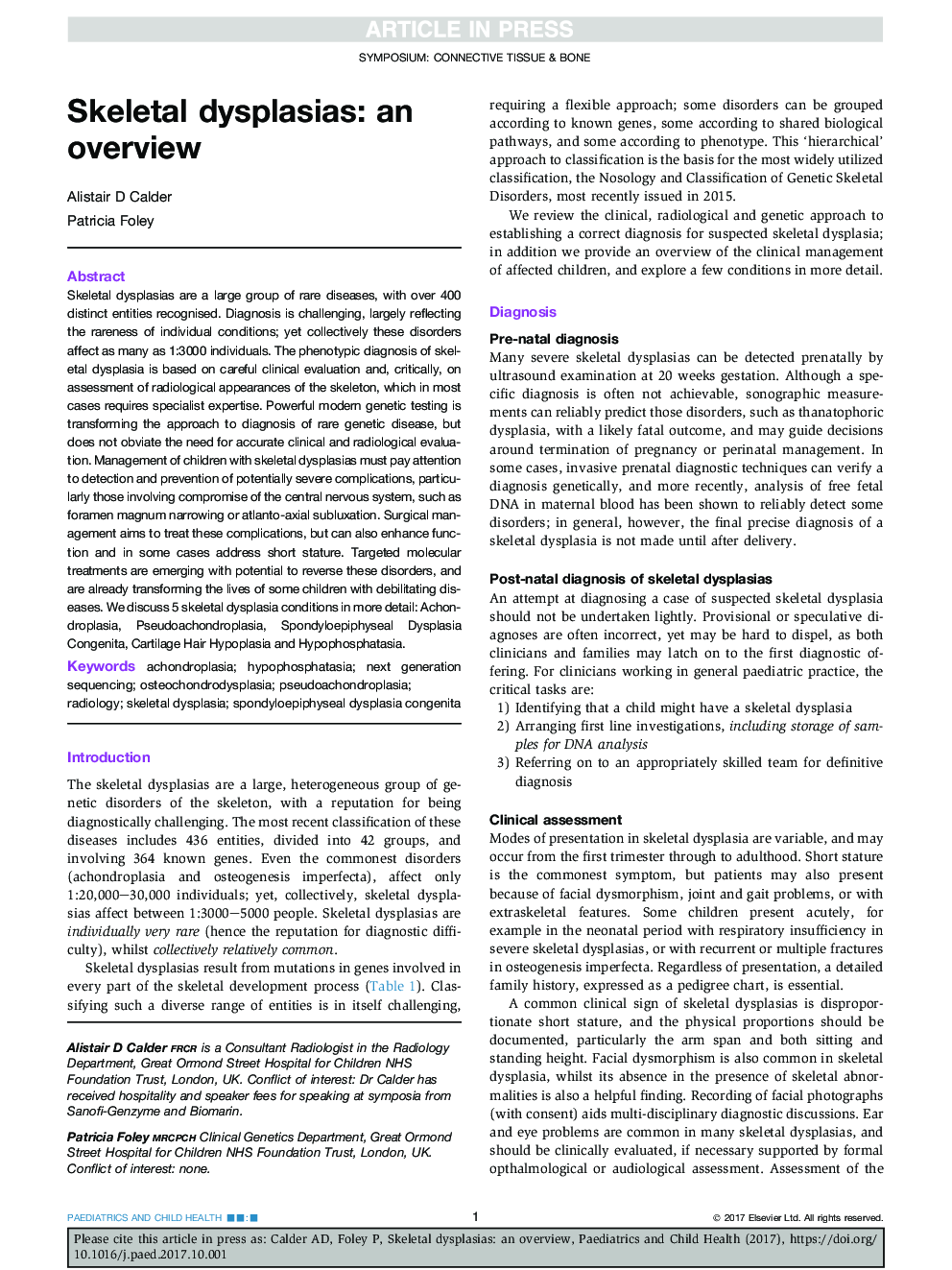| Article ID | Journal | Published Year | Pages | File Type |
|---|---|---|---|---|
| 8813130 | Paediatrics and Child Health | 2018 | 9 Pages |
Abstract
Skeletal dysplasias are a large group of rare diseases, with over 400 distinct entities recognised. Diagnosis is challenging, largely reflecting the rareness of individual conditions; yet collectively these disorders affect as many as 1:3000 individuals. The phenotypic diagnosis of skeletal dysplasia is based on careful clinical evaluation and, critically, on assessment of radiological appearances of the skeleton, which in most cases requires specialist expertise. Powerful modern genetic testing is transforming the approach to diagnosis of rare genetic disease, but does not obviate the need for accurate clinical and radiological evaluation. Management of children with skeletal dysplasias must pay attention to detection and prevention of potentially severe complications, particularly those involving compromise of the central nervous system, such as foramen magnum narrowing or atlanto-axial subluxation. Surgical management aims to treat these complications, but can also enhance function and in some cases address short stature. Targeted molecular treatments are emerging with potential to reverse these disorders, and are already transforming the lives of some children with debilitating diseases. We discuss 5 skeletal dysplasia conditions in more detail: Achondroplasia, Pseudoachondroplasia, Spondyloepiphyseal Dysplasia Congenita, Cartilage Hair Hypoplasia and Hypophosphatasia.
Keywords
Related Topics
Health Sciences
Medicine and Dentistry
Perinatology, Pediatrics and Child Health
Authors
Alistair D. Calder, Patricia Foley,
